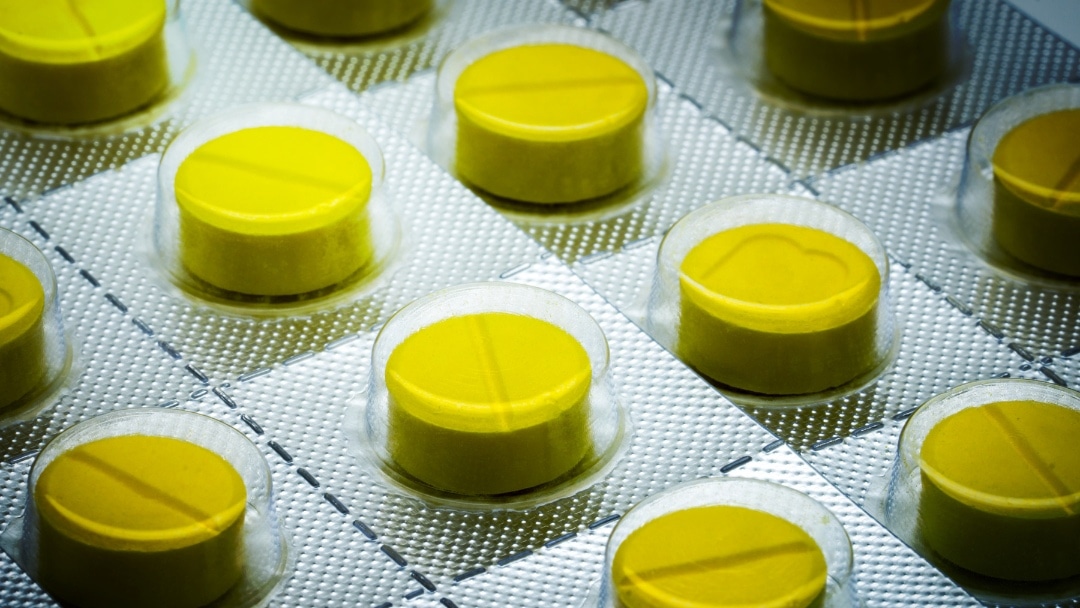It’s important to know how to reduce inflammation if your child has a neurodevelopmental disorder, mood disorder, autoimmune disorder or other chronic health condition. Inflammation is the body’s way of fighting against harmful pathogens and toxins and protecting itself. An acute inflammatory response occurs when the body has an injury or infection and immediately is trying to heal itself.
When toxic insults to the body are continual and the body is unable to calm itself down between insults, then the inflammatory response becomes chronic and long-term, eventually leading to a disease, disorder or condition. In a constant inflammatory state, the immune system produces chemicals called cytokines, which is a group of proteins created by the immune system to regulate immune and inflammatory responses. Over time these inflammatory chemicals begin to damage the immune system.
Chronic Inflammatory Conditions and Disorders
Today, there is a high rate of conditions and disorders affecting children due to the toxic environment of heavy metals, bacteria, viruses, endocrine disruptors, processed foods and so on. Many of these conditions and disorders have reached epidemic proportions such as:
- Asthma
- Eczema
- Headaches
- Cradle cap
- Itching
- Inflammatory bowel disease
- Colitis
- Autism spectrum disorder
- ADD/ADHD
Some inflammatory symptoms common in children are:
- Inability to focus and concentrate
- Cognitive and language delays
- Behavioral issues
- Sleep disturbances
- Self-stimulatory behaviors
- Hyperactivity
- Anal itching
Therefore, reducing inflammation is paramount to healing the immune system in order to recover children from their condition or disorder.
Where’s the Inflammation?
Inflammation is going to occur in the body wherever there are autoantibodies because the body’s immune system is attacking itself. For example, children with autism have autoantibodies found in the brain and the digestive tract which are two sources of inflammation.
Neuroinflammation such as seizures and digestive inflammation such as malabsorption and Leaky Gut Syndrome lead to chronic inflammation and immune dysregulation in children with chronic health conditions. Another important issue for these children is the inability to reduce high inflammatory levels because of the complex situation and severity of the impairments.
An overall approach of many avenues may help decrease the inflammatory conditions your child may have.
The Many Ways to Reduce Inflammation
Change the Diet
At a minimum, we recommend that you eliminate the following from your diet:
- Gluten (wheat, barley, rye and non-gluten-free oats)
- Casein (dairy)
- Refined sugars and carbohydrates
- Sodas
- Genetically modified foods (GMOs)
- Chemical additives
- Artificial colors
- Natural flavors
- Artificial flavors
- Preservatives
- Vegetable oils
Eliminating these ingredients from your child’s diet will help to lower inflammation. If your child’s symptoms persist, you may find that you need to go a step further and implement a special diet.
Go Organic
Non-organic foods typically contain much higher of levels of inflammatory, nerve-damaging and endocrine-disrupting pesticides. Non-organic foods, especially corn, soy, canola and sugar that doesn’t come from sugar cane are much more likely to be genetically modified as well as contain significantly higher levels of dangerous pesticides. By law, organic foods are not allowed to be genetically modified.
Supplement with Antioxidants
The very nature of an antioxidant means that it can reduce inflammation. Common antioxidants are:
- Vitamin C
- Vitamin E
- Glutathione
- Curcumin
- Green tea extract (EGCG)
- Broccoli seed extract (sulforaphane)
- Resveratrol
In addition to supplementing with antioxidants, it’s important to have your child eat fresh, colorful produce. “Eating the rainbow” of a wide variety of fruits, vegetables and herbs can ensure that your child gets the highest possible amounts of antioxidants.
Supplement with Vitamin D3
Low vitamin D is common in children with neurodevelopmental disorders, mood disorders and autoimmune conditions. While vitamin D is not itself an antioxidant, it improves the function of the immune system and thus can have a side benefit of lowering inflammation.
Use Homeopathic Remedies
Homeopathic remedies an help alleviate inflammatory symptoms and are also a better choice than antibiotics, which kill good bacteria that protects the body from other microbes that help absorb nutrients and regulate inflammation.
Take Probiotics and Prebiotics
Eating fiber-rich food loaded with inulin provides food for probiotic bacteria and yeast, which can heal the microbiome. Examples of high-inulin-containing foods (prebiotics) are:
- Ground chicory root
- Dandelion root
- Asparagus
- Leeks
- Onions
- Bananas
- Plantains
- Garlic
Most good probiotics are refrigerated; examples of them are:
- VSL#3
- Gut Pro
- Dr. Ohirra’s Live Cultured Probiotics
- Garden of Life
- Culturelle
- Klaire Labs
Eat Fermented Products
Fermented foods can keep the gastrointestinal system and microbiome healthy and strong which in turn will keep the immune system strong. Examples of fermented foods are:
- Kefir, if dairy is tolerated
- Home-made yogurt, if dairy is tolerated
- Kombucha
- Miso soup, if soy is tolerated
- Fermented vegetables, such as:
- Sauerkraut
- Kim chi
- Umeboshi plums
Avoid C-Sections and Antibiotics
Children born via c-section are much more likely to have autism, ADHD, allergies and asthma because they do not come in contact with the mother’s vaginal flora that initiate the inoculation and immune-system-building process. In addition, antibiotics destroy natural colonization of good bacteria and fungi in the body. Instead, use natural alternatives to antibiotics.
Eliminate Allergies and Sensitivities
Allergies and sensitivities to foods and environmental triggers are typically early signs of an inflammatory condition in the making. Most children who developed neurodevelopmental disorders, mood disorders or autoimmune conditions typically started off as babies with signs of allergies and sensitivities such as:
- One or two red cheeks after eating
- Red or hot ears after eating
- Chronic runny nose or cough
- Chronic mouth breathing
- Recurrent ear infections
- Chronic or recurrent sinus infections
- Chronic or recurrent strep infections
- Eczema
- Frequent diaper rashes in babies, especially red rings around the anus or redness of the vaginal area
- Cradle cap or excessive scaling and dandruff on the scalp
- Cavities and excessive tartar, or bad breath despite proper dental hygiene
- Frequent day-time accidents in an already potty-trained child
- Nighttime bedwetting well into the grade school years
- Nocturia, frequent waking to go to the bathroom
- Dark circles or bags surrounding the eyes, “droopy” eyes (“allergic shiners”)
- Colic, excessive crying or irritability in babies
- Frequent temper tantrums (multiple times a day)
- Frequent crying, sadness, anger (multiple times a day)
- Esophageal reflux, babies who chronically spit up or regurgitate after eating
- White coating on the tongue
- Chronic thrush infections
- Unusual fingernail or toenail formation
- Frequent loose stools, diarrhea
- Undigested food found routinely in stools
- Constipation, infrequent stooling, (only going once every few days, or straining with a bowel movement)
- Excessive gas, flatulence
- Chronically discolored stools: white, yellow, or black.
- Floating stools, or dry stools (“rabbit pellets”)
- “Tummy aches”
- Distended “pot belly”
There are several ways to eliminate allergies and sensitivities:
- Do an allergy-elimination protocol, such as:
- Nambudripad’s Allergy Elimination Technique (NAET)
- Bio-energetic Sensitivity and Enzyme Therapy (BioSET)
- Low-Dose Allergen (LDA) Therapy
- Do an elimination diet
- Implement a gut-healing diet
Detoxify
Heavy metals, viruses, bacteria and other contributing pathogens destroy enzymes that are needed to break down foods. When these enzymes are deficient, allergies and sensitivities are more likely to occur, as is inflammation. We recommend that you work with a health practitioner that can help your child detoxify with supplements such as:
- Glutathione
- N-acetylcysteine (NAC, a precursor to glutathione)
- Alpha lipoic acid
- R-lipoic acid
- Homotoxicology
- Homeopathic remedies
- Herbal remedies
- Activated charcoal
- Zeolith
- Clay baths
Clean up the Gastrointestinal Tract
Overgrowth of microbial infestation from pathogenic yeast, parasites, bacteria and viruses can create inflammation. By healing the gut, your child’s immune system can improve, thus lowering inflammation.
Increase Good Fats
The wrong kinds of fats increase inflammation, so have your child avoid:
- Vegetable oils
- Trans fats
- Margarine
- Hydrogenated or partially hydrogenated oils
Instead, add in good quality fats such as:
- Coconut oil
- Olive oil
- Avocados
- Wild salmon
- Organic chicken
- Organic turkey
- Grass-fed ghee
- Pasture-raised eggs
- Grass-fed beef
- Essential fatty acids from:
- Cod liver oil
- Hemp seeds
- Flax seeds
- Evening primrose oil
- Borage oil
- Walnut oil
Reduce Glutamates and Increase GABA
High glutamates in the diet cause excitotoxic reactions in the brain that can kill brain neurons and cause inflammation in the brain. Read Excitotoxins: The Taste That Kills by Russell Blaylock MD to learn more. Glutamate is an excitatory neurotransmitter that stimulates brain cells and can cause:
- Hyperactivity
- Seizures
- Lack of speech (when the ratio of glutamate is higher than GABA in the brain)
- Inability to sleep
- Self-stimulatory behaviors
- Hand-flapping
- Echolalia
- Anxiety
- Bedwetting
- Obsessive and repetitive behaviors
We recommend implementing a low-glutamate diet to counter the above-listed symptoms. Work with your healthcare practitioner to determine if PharmaGABA and picamilon, two types of GABA supplements that cross the blood brain barrier to lower glutamate levels and reduce inflammation, are right for your child.
Increase Electrolytes and Trace Minerals
Without electrolytes, a person can have a seizure because of low sodium and/or potassium levels. Trace minerals come from the rocks in the earth which are mineralizing and alkalizing. They are very important for:
- Mineralizing the body
- Making the electrical connections in the body work
- Regulating the kidneys which reduces fear and anxiety
- Supporting the adrenal and thyroid glands
- Contributing to enzymatic reactions
- Alkalizing pH
- Reducing inflammation
- Increasing bone mass
Balance Hormones
Hormonal imbalances can lead to inflammation in the body. High estrogen levels can contribute to cancer; high testosterone can increase seizures and male symptoms of autism.
High cortisol levels can lead to adrenal fatigue which is an on-going problem for children with neurodevelopmental disorders, mood disorders and/or autoimmune conditions. These children can have high anxiety, extreme fears and limited coping abilities. Keep in mind that when one hormone is out of balance, the rest of the hormones are typically not working efficiently.
Use Hyperbaric Oxygen Therapy (HBOT)
HBOT is oxygen under pressure, which can have many beneficial effects, such as:
- Healing wounds
- Calming down the nervous system
- Reducing yeast overgrowth, parasites, and microbial infestations, due to the effectiveness of oxygen pressure getting into the tissue to destroy pathogens
- Revitalizing the idling neurons in the brain to increase cognitive abilities
- Improving speech
- Improving muscle tone
- Improving respiratory issues
- Improving eye contact
- Decreasing hyperactivity
- Decreasing self-stimulatory behaviors
- Reducing long-chain fatty acids that contributes to inflammation
Only with the hard chamber can an ATA (One atmosphere absolute) of 1.5 and above be achieved, which is more effective for healing. At least 40 to 60 sessions are necessary to obtain the significant benefits.
Consider Low-Dose Naltrexone (LDN)
Low-dose naltrexone is an opiate blocker and anti-inflammatory that comes in a transdermal cream at a very low dose (TD-LDN). Many families of children with autism and other neuroimmune and autoimmune disorders have found LDN to be very effective in improving behaviors, digestion, and sleep and decreasing pain. LDN has very little side effects and no known toxicity.
LDN reduces inflammation by correcting the imbalance between TH1 and TH2. When the immune system shifts into a TH2 state, it is a more inflammatory immune zone with little oxygen and lots of bacteria, viruses and microbes.
Shifting the immune system from TH2 to TH1 is much more difficult but a very effective way of changing the environment of the immune system so there are more T-cells to fight infection, bacteria, viruses and other pathogens.
LDN may be an effective way for some children with neuroimmune and autoimmune disorders to reduce inflammation and improve their immune systems.
Test for Phosphalipase 2 (PLA 2)
Phosphalipase 2 is a urine test that is an inflammatory/immune marker; PLA 2 is elevated in a wide range of inflammatory disorders. It is one of the key biochemical factors produced in the inflammation response. Elevated PLA 2 maybe caused by:
- Allergies, especially those to house dust and cats
- Venoms from snakes, spiders and bees
- Candida albicans
- Certain species of Clostridia
- Trauma
CPD choline is a supplement that has been found to reduce PLA 2 if the levels are found to be high. Many children with autism take CPD choline to reduce inflammation. Inflammation plays a key role in many diseases, disorders and conditions, and PLA 2 is another way of reducing inflammation. For more information, visit the Great Plains Laboratory site for information about the PLA 2 test.
Still Looking for Answers?
Visit the Epidemic Answers Practitioner Directory to find a practitioner near you.
Join us inside our online membership community for parents, Healing Together, where you’ll find even more healing resources, expert guidance, and a community to support you every step of your child’s healing journey.
Sources & References
Assa, A., et al. Vitamin D deficiency promotes epithelial barrier dysfunction and intestinal inflammation. J Infect Dis. 2014;210(8):1296-305.
Bartekova, M., et al. Role of cytokines and inflammation in heart function during health and disease. Heart Fail Rev. 2018 Sep;23(5):733-758.
Berk, M., et al. So depression is an inflammatory disease, but where does the inflammation come from? BMC Med. 2013;11:200.
Bigi, S., et al. The growing spectrum of antibody-associated inflammatory brain diseases in children. Neurol Neuroimmunol Neuroinflamm. 2015 Apr 2;2(3):e92.
Brown, K.D., et al. Effect of Early and Prophylactic Nonsteroidal Anti-Inflammatory Drugs on Flare Duration in Pediatric Acute-Onset Neuropsychiatric Syndrome: An Observational Study of Patients Followed by an Academic Community-Based Pediatric Acute-Onset Neuropsychiatric Syndrome Clinic. J Child Adolesc Psychopharmacol. 2017 Jul 11.
Classen, J.B. Review of evidence that epidemics of type 1 diabetes and type 2 diabetes/metabolic syndrome are polar opposite responses to iatrogenic inflammation. Curr Diabetes Rev. 2012;8(6):413-8.
Cosentino, F., et al. Diabetes and inflammation. Herz. 2004 Dec;29(8):749-59.
Cucchiara, S., et al. Interactions between intestinal microbiota and innate immune system in pediatric inflammatory bowel disease. J Clin Gastroenterol. 2012;46 Suppl:S64-6.
Dahm, T., et al. Neuroinvasion and Inflammation in Viral Central Nervous System Infections. Mediators Inflamm. 2016;2016:8562805.
Dunn, G.A., et al. Neuroinflammation as a risk factor for attention deficit hyperactivity disorder. Pharmacol Biochem Behav. 2019 Jul;182:22-34.
El-Ansary, A., et al. Neuroinflammation in autism spectrum disorders. J Neuroinflammation. 2012;9:265.
Elhady, M., et al. Role of inflammation in childhood epilepsy and ADHD comorbidity. Appl Neuropsychol Child. 2020 Aug 25;1-6.
Fahy, J.V., et al. Type 2 inflammation in asthma–present in most, absent in many. Nat Rev Immunol. 2015 Jan;15(1):57-65.
Guandalini, S. Are probiotics or prebiotics useful in pediatric irritable bowel syndrome or inflammatory bowel disease? Front Med (Lausanne). 2014;1:23.
Guandalini, S., et al. Prebiotics and probiotics in irritable bowel syndrome and inflammatory bowel disease in children. Benef Microbes. 2015;6(2):209-17.
Gupta, S., et al. Asthma, GERD and Obesity: Triangle of Inflammation. Indian J Pediatr. 2018 Oct;85(10):887-892.
Gustafsson, H.C., et al. Evaluation of maternal inflammation as a marker of future offspring ADHD symptoms: A prospective investigation. Brain Behav Immun. 2020 Oct;89:350-356.
Halim, M., et al. The effects of inflammation, aging and oxidative stress on the pathogenesis of diabetes mellitus (type 2 diabetes). Diabetes Metab Syndr. Mar-Apr 2019;13(2):1165-1172.
Jakobsen, C., et al. Environmental factors and risk of developing paediatric inflammatory bowel disease — a population based study. 2007-2009. J Crohns Colitis. 2013;7(1):79-88.
Jialal, I., et al. Targeting inflammation to reduce ASCVD in type 2 diabetes. J Diabetes Complications. 2019 Jan;33(1):1-3.
Johnson, A.C., et al. Magnesium sulfate treatment reverses seizure susceptibility and decreases neuroinflammation in a rat model of severe preeclampsia. PLoS One. 2014 Nov 19;9(11):e113670
Jyonouchi, H., et al. Cytokine profiles by peripheral blood monocytes are associated with changes in behavioral symptoms following immune insults in a subset of ASD subjects: an inflammatory subtype? J Neuroinflammation. 2014 Oct 27;11:187.
Karstoft, K. Exercise and type 2 diabetes: focus on metabolism and inflammation. Immunol Cell Biol. 2016 Feb;94(2):146-50.
Kiecolt-Glaser, J.K., et al. Omega-3 supplementation lowers inflammation and anxiety in medical students: a randomized controlled trial. Brain Behav Res. 2011 Nov;25(8):1725-34.
Li, N., et al. Fecal microbiota transplantation from chronic unpredictable mild stress mice donors affects anxiety-like and depression-like behavior in recipient mice via the gut microbiota-inflammation-brain axis. Stress. 2019 Sep;22(5):592-602.
Lontchi-Yimagou, E., et al. Diabetes mellitus and inflammation. Curr Diab Rep. 2013 Jun;13(3):435-44.
Michopoulos, J., et al. Inflammation in Fear- and Anxiety-Based Disorders: PTSD, GAD, and Beyond. Neuropsychopharmacology. 2017 Jan;42(1):254-270.
Muriach, M., et al. Diabetes and the brain: oxidative stress, inflammation, and autophagy. Oxid Med Cell Longev. 2014;2014:102158.
Nemecheck, P., et al. Autism Spectrum Disorder Symptoms Improve with Combination Therapy Directed at Improving Gut Microbiota and Reducing Inflammation. Applied Psychiatry. 2020 Jul; (1)1.
Orivuori, L., et al. High level of fecal calprotectin at age 2 months as a marker of intestinal inflammation predicts atopic dermatitis and asthma by age 6. Clin Exp Allergy. 2015.
Peirce, J.M., et al. The role of inflammation and the gut microbiome in depression and anxiety. J Neurosci Res. 2019 Oct;97(10):1223-1241.
Rosa, J.S., et al. Altered inflammatory, oxidative, and metabolic responses to exercise in pediatric obesity and type 1 diabetes. Pediatr Diabetes. 2011;12(5):464-72.
Salim, S., et al. Inflammation in anxiety. Adv Protein Chem Struct Biol. 2012;88:1-25.
Shekhawat, P.S., et al. Spontaneous development of intestinal and colonic atrophy and inflammation in the carnitine-deficient jvs (OCTN2(-/-)) mice. Mol Genet Metab. 2007 Dec;92(4):315-24.
Spartz, E.J., et al. Course of Neuropsychiatric Symptoms After Introduction and Removal of Nonsteroidal Anti-Inflammatory Drugs: A Pediatric Observational Study. J Child Adolesc Psychopharmacol. 2017 Jul 11.
Spatola, M., et al. Seizures and risk of epilepsy in autoimmune and other inflammatory encephalitis. Curr Opin Neurol. 2017 Jun;30(3):345-353.
Theoharides, T.C., et al. Neuro-inflammation, blood-brain barrier, seizures and autism. J Neuroinflammation. 2011 Nov 30;8:168.
Tohidpour, A., et al. Neuroinflammation and Infection: Molecular Mechanisms Associated with Dysfunction of Neurovascular Unit. Front Cell Infect Microbiol. 2017 Jun 20;7:276.
Turkmen, K., et al. Inflammation, oxidative stress, apoptosis, and autophagy in diabetes mellitus and diabetic kidney disease: the Four Horsemen of the Apocalypse. Int Urol Nephrol. 2017 May;49(5):837-844.
Vargas, D.L., et al. Neuroglial activation and neuroinflammation in the brain of patients with autism. Annals of Neurology. 2005 Jan;57(1):67-81.
Verlaet, A.A., et al. Rationale for Dietary Antioxidant Treatment of ADHD. Nutrients. 2018 Mar 24;10(4):405.
Vohr., B.R., et al. Neurodevelopment: The Impact of Nutrition and Inflammation During Preconception and Pregnancy in Low-Resource Settings. Pediatrics. 2017 Apr;139(Suppl 1):S38-S49.
Vojdani, A., et al. A Gut Feeling for Immune Dysregulation & Neuroinflammation in Autism. The Autism File. 2009(31).
Welcome, M.O., et al. Cellular mechanisms and molecular signaling pathways in stress-induced anxiety, depression, and blood-brain barrier inflammation and leakage. Inflammopharmacology. 2020 Jun;28(3):643-665.
West, C.E., et al. The gut microbiota and inflammatory noncommunicable diseases: associations and potentials for gut microbiota therapies. J Allergy Clin Immunol. 2015;135(1):3-13; quiz 4.
Wirtz, P.H., et al. Psychological Stress, Inflammation, and Coronary Heart Disease. Curr Cardiol Rep. 2017 Sep 20;19(11):111.
Wong, M.L., et al. Inflammasome signaling affects anxiety- and depressive-like behavior and gut microbiome composition. Mol Psychiatry. 2016 Jun;21(6):797-805.
Wynchank, D., et al. Inflammation, Sleep and ADHD. J Clin Sleep Med. 2018 Jun 15;14(6):1083.
Zanoli, L., et al. Anxiety, depression, chronic inflammation and aortic stiffness in Crohn’s disease: the brain–gut–vascular axis. J Hypertens. 2020 Oct;38(10):2008-2017.
Resources
Books
Bock, Kenneth. Healing the New Childhood Epidemics: Autism, ADHD, Asthma, and Allergies: The Groundbreaking Program for the 4-A Disorders. New York, NY. Ballantine Books, 2008.
Brogan, Kelly. A Mind of Your Own. The Truth About Depression and How Women Can Heal Their Bodies to Reclaim Their Lives. New York, Harper, 2016.
Herbert, Martha, Weintraub Karen. The Autism Revolution: Whole-Body Strategies for Making Life All It Can Be. New York: Ballantine Books; 2012.
Hong, Maria Rickert. Almost Autism: Recovering Children from Sensory Processing Disorder, A Reference for Parents and Practitioners. 2014.
Hyman, Mark. The UltraMind Solution: Fix Your Broken Brain by Healing Your Body First: The Simple Way to Defeat Depression, Overcome Anxiety and Sharpen Your Mind. 1st Scribner hardcover ed. New York: Scribner; 2008.
Lambert, Beth, et al. Brain Under Attack: A Resource for Parents and Caregivers of Children with PANS, PANDAS, and Autoimmune Encephalitis. Answers Publications, 2018.
Whittaker, Faye. Rheumatoid Remedies: A Collection of More Than 70 Pages of Nutritional and Drug-Free Options to Promote Recovery from Rheumatoid Arthritis and Associated Inflammatory Diseases. 1st ed. Kaitaia, New Zealand: Dancing Lion Press; 2009.




